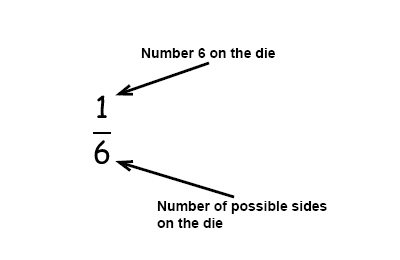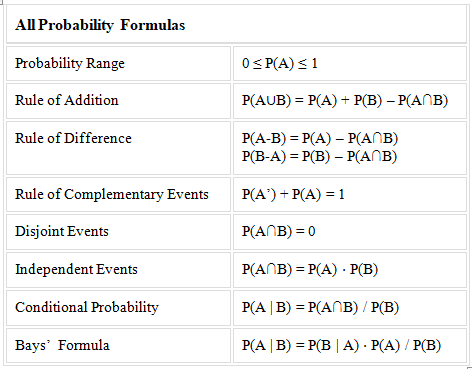- Books Name
- AMARENDRA PATTANAYAK Mathmatics Book
- Publication
- KRISHNA PUBLICATIONS
- Course
- CBSE Class 11
- Subject
- Mathmatics
Probability of an event
The probability of an event is the proportion (relative frequency) of times that the event is expected to occur when an experiment is repeated a large number of times under identical conditions.

Where,
- P(A) is the probability of an event “A”
- n(A) is the number of favourable outcomes
- n(S) is the total number of events in the sample space
What is the probability to get a 6 when you roll a die?
A die has 6 sides, 1 side contain the number 6 that give us 1 wanted outcome in 6 possible outcomes.

Example:
Let us consider another experiment of ‘tossing a coin “twice”
The sample space of this experiment is S = {HH, HT, TH, TT}
P(HH) =1/4 , P(HT) = 1 / 7 , P(TH) = 2 / 7 , P(TT) = 9 / 28
The probability of the event E: ‘Both the tosses yield the same result’.
Here E = {HH, TT}
Now P(E) = S P(wi), for all wi Î E
= P(HH) + P(TT) = 1/4 + 9 / 28 = 4 /7
For the event F: ‘exactly two heads’, we have F = {HH}
P(F) = P(HH) = ¼
Probabilities of equally likely outcomes: Let a sample space of an experiment be
S = {w1, w2,..., wn}.
Let all the outcomes are equally likely to occur, i.e., the chance of occurrence of each
simple event must be same.
i.e. P(wi) = p, for all wi Î S where 0 £ p £ 1
Since i.e., P(w1)+ P(w2)+ P(w3) + P(w4) + P(w5)+.....+ P(wn) = p + p + ... + p (n times) = 1

Let S be a sample space and E be an event, such that n(S) = n and n(E) = m. If each outcome is equally likely, then it follows that

Basic Probability Formulas
Let A and B are two events. The probability formulas are listed below:


 KRISHNA PUBLICATIONS
KRISHNA PUBLICATIONS
